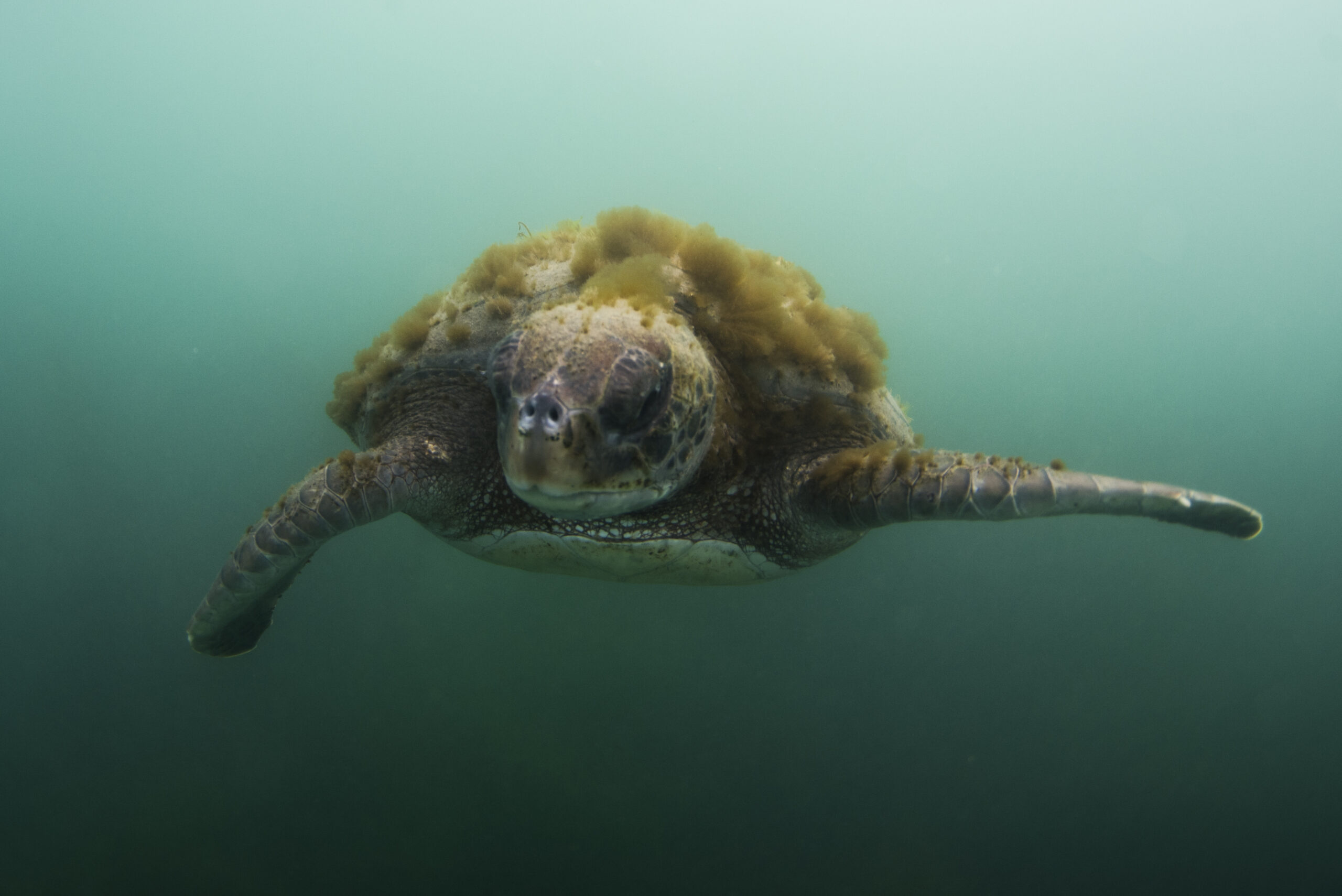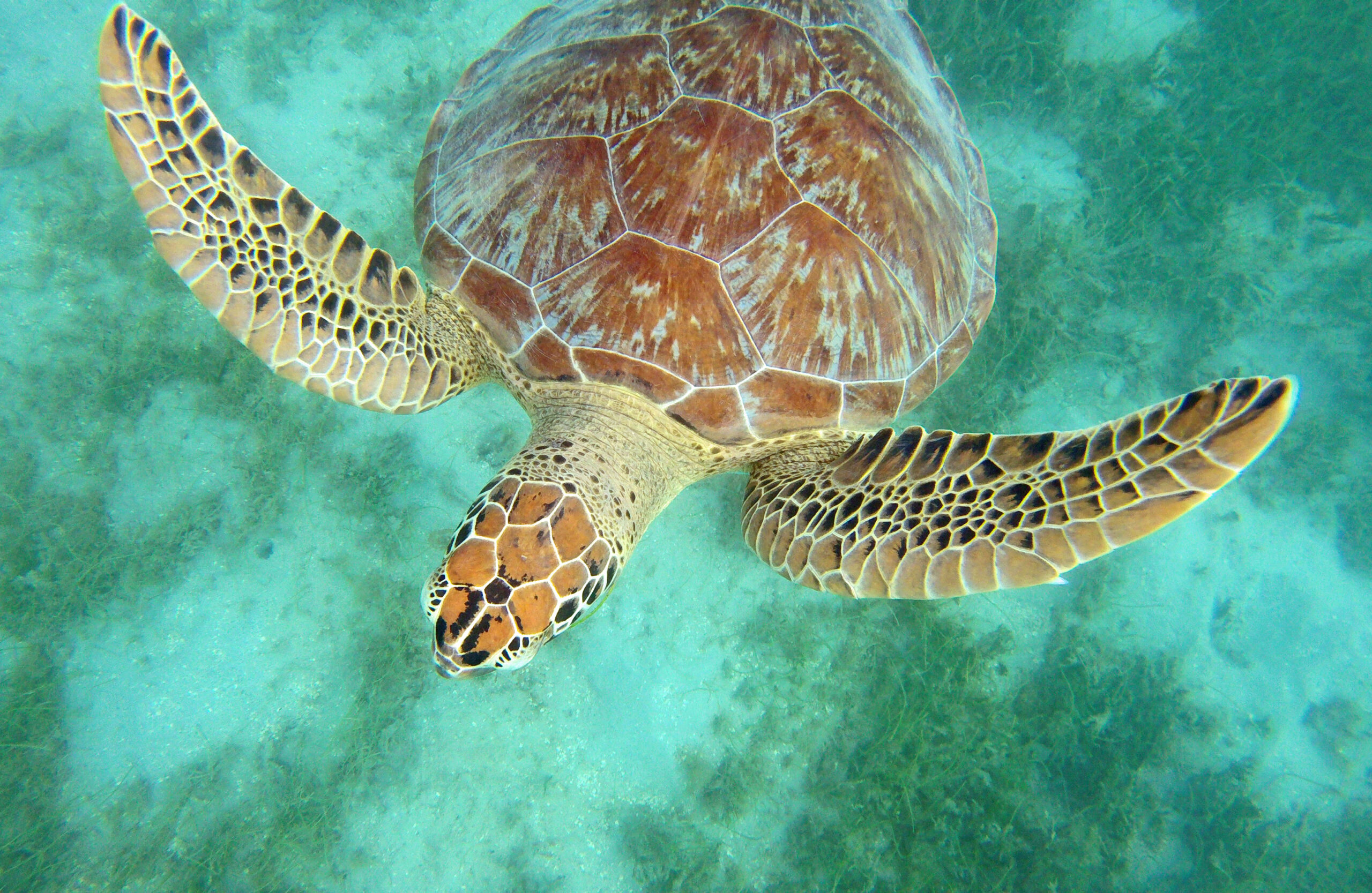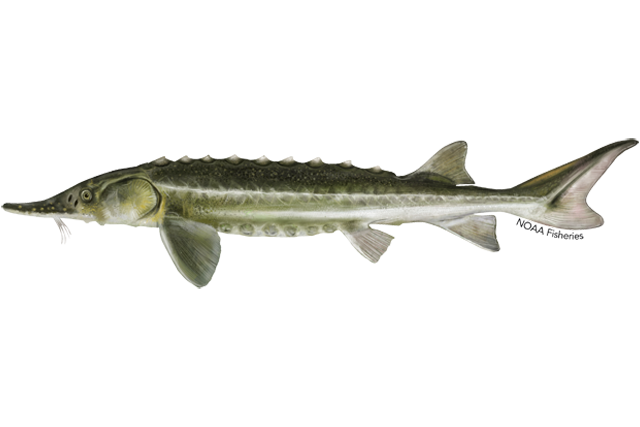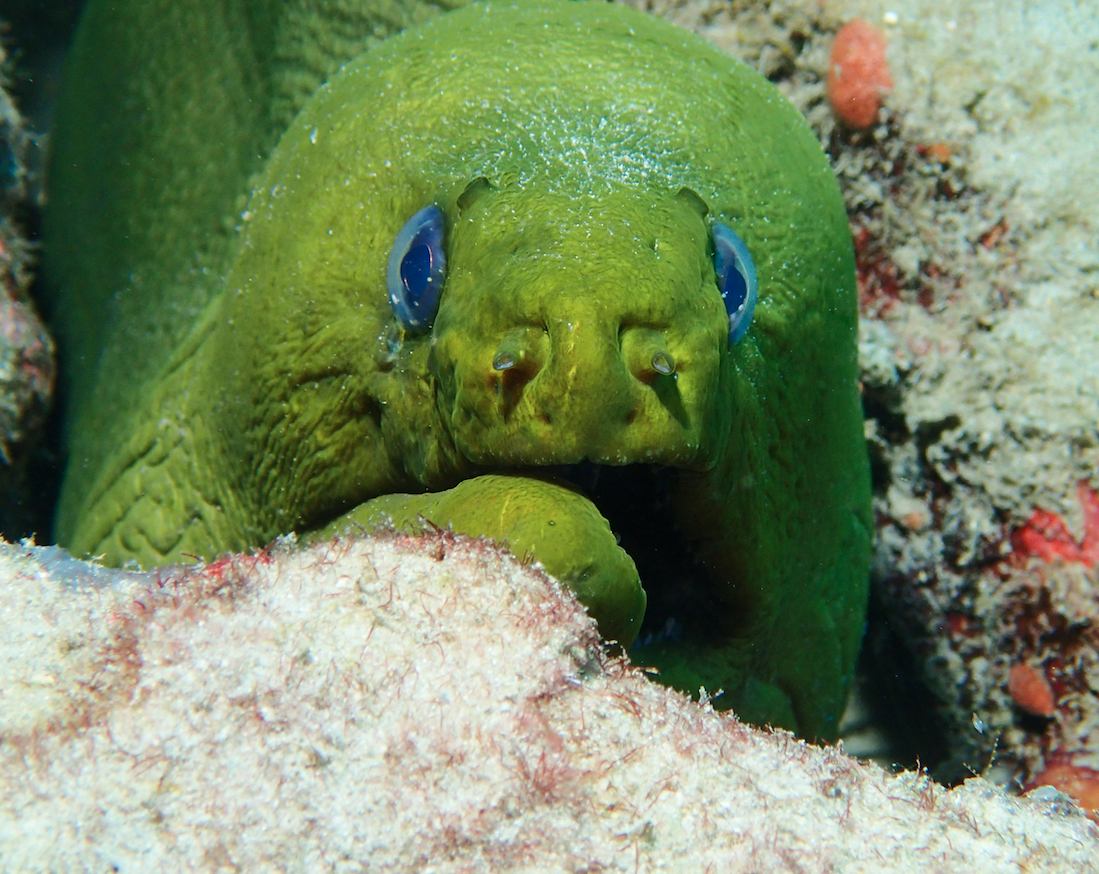Green Marine Species to Celebrate This (Almost) Spring
Discover these verdant sea critters just in time for St. Patrick’s Day

During the greenest month of them all, I’ve rounded up some of the coolest green marine wildlife that our ocean has to offer. Take a look at these festive species and find out some fascinating fun facts about them.
Green Sea Turtle
Scientific Name: Chelonia mydas
IUCN Red List Status: Endangered

While these turtles have shells that are brownish-olive in color, they get their name from the green tint to their skin. Green sea turtles aren’t just “green” when it comes to their appearance, either. They’re plant-based eaters for the majority of their life, eating primarily vegetation like algae and seagrass once they grow into adulthood. This species contributes to the wellness of seagrass beds as well, trimming the tops of the beds to keep them nice and healthy.
Green Sturgeon
Scientific Name: Acipenser medirostris
IUCN Rating: Near Threatened

Sturgeon are some of the oldest living fish in the entire world. They can thrive in both saltwater and freshwater, spending most of their time in the sea but swimming upstream into rivers when it’s time for them to have their babies (fish that do this are called anadromous fish). Their favorite snacks are invertebrates, including crustaceans like shrimp and crabs. Unlike their other bony fish relatives, their bodies are covered in bony plates called scutes, rather than scales. They are large—up to seven feet long—and can live up to around 70 years old.
Green Moray Eel
Scientific Name: Gymnothorax funebris
IUCN Rating: Least Concern

This slithery green species is one of a kind: it is the only fish able to swim both backward and forward! Green moray eels like to hide in crevices and tight spaces most of the day before they come out at night to search for prey like octopus and crustaceans. These eels have scaleless, slimy, smooth skin that’s covered in mucus to help them squeeze into the compact spaces they prefer (this mucus is also where they get the color of their skin). They’re also quite gifted when it comes to their sense of smell, which they definitely need when it comes to pinpointing their prey in the dark seas at night.
Interested in learning more about marine wildlife? You’re in luck! Visit our wildlife fact sheets to learn more about all the spectacular species that call our ocean home.